Surfing is a thrilling and challenging sport that requires skill, patience, and practice. If you’re an experienced surfer, you may have considered teaching someone else how to surf.
However, teaching someone to surf can be a challenging task, especially if you’re not sure where to start. In this article, we’ll provide you with some tips and techniques to help you teach someone to surf.
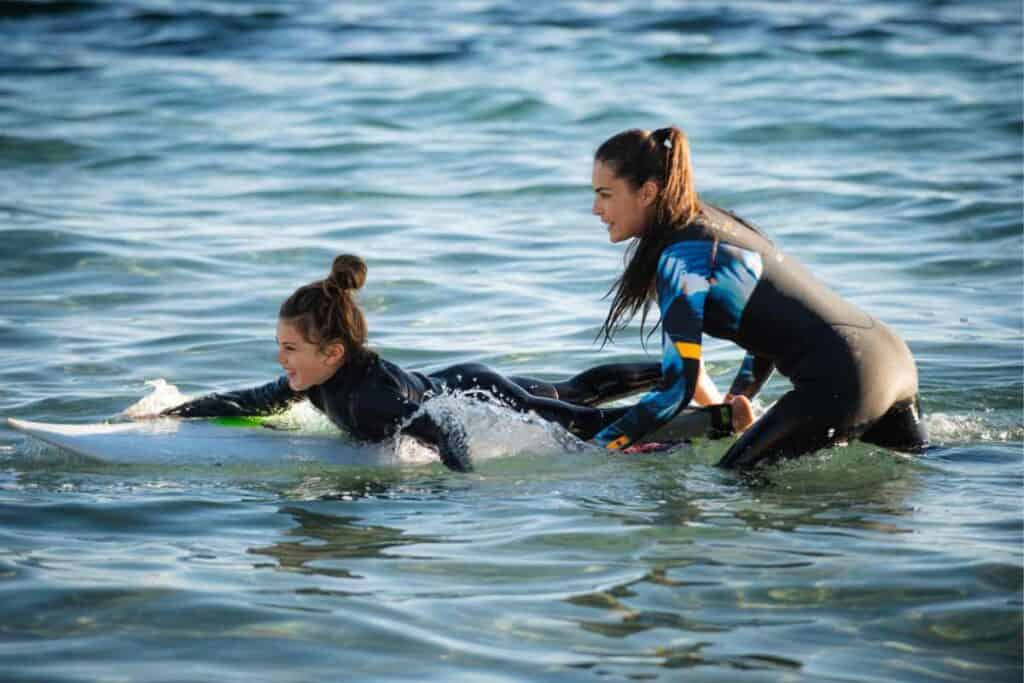
Before you start teaching someone to surf, it’s important to help your student understand that surfing is not an easy sport to learn.
It takes time, effort, and a lot of practice to become proficient.
As the teacher, you’ll need to be patient and supportive, and you’ll need to create a safe and positive learning environment. It’s also important to remember that everyone learns at their own pace, so don’t get frustrated if your student doesn’t pick it up right away.
One of the most important things you can do when teaching someone to surf is to start with the basics. This means teaching them about the equipment they’ll be using, including the surfboard, leash, and wax.
You’ll also need to teach them the proper technique for paddling, sitting on the board, and standing up. By starting with the basics, you’ll help your student build a solid foundation of skills that they can build upon as they progress.
Preparing for the Lesson
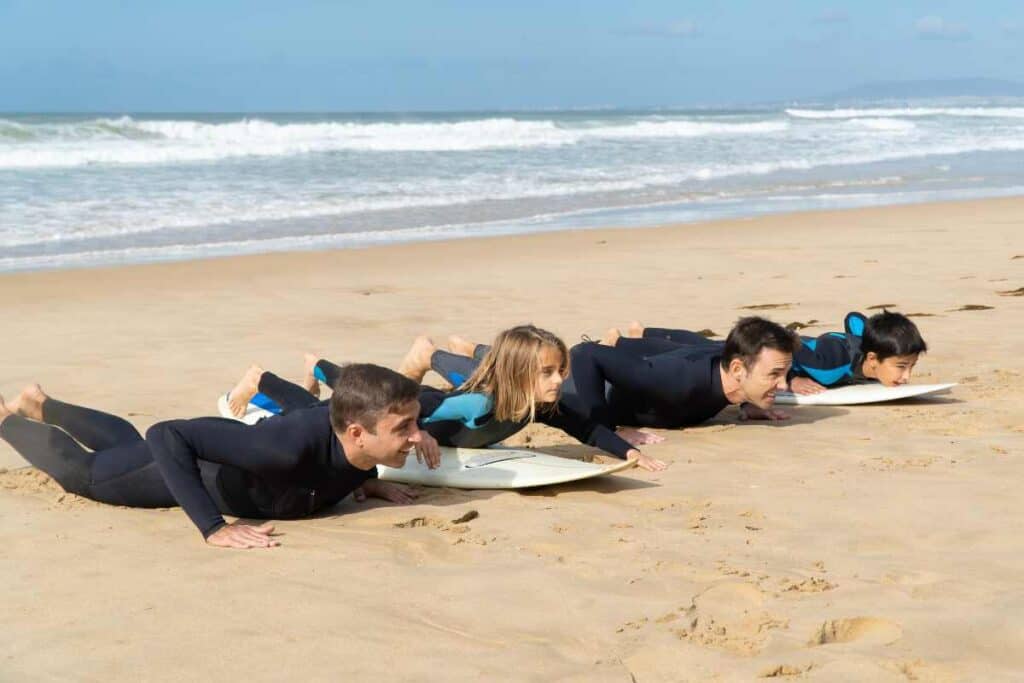
Before you hit the waves, there are a few things you should do to prepare for your surf lesson.
Here are some tips to help you (and student) get ready:
- Get in shape: Surfing requires a lot of strength and endurance, so it’s important to be physically prepared and able.
- Choose the right gear: Make sure you have a suitable surfboard for learning
- Watch some videos: Although not a substitute for surf lessons, watching videos about surfing and “how-to” surf videos can give learners a better idea of what to expect
- Get mentally prepared: Surfing can be challenging, so it’s important that learners have a positive attitude and trust the process. Be patient with yourself and don’t get discouraged if you don’t get the hang of it right away.
By following these tips, you’ll be well-prepared for your surf lesson .
Teaching the Basics
Teaching someone to surf can be a challenging task, but it can also be an incredibly rewarding experience.
Before you get started, it’s important to make sure your student has the right gear. A beginner surfboard, leash, and wetsuit are essential for a safe and successful surfing experience.
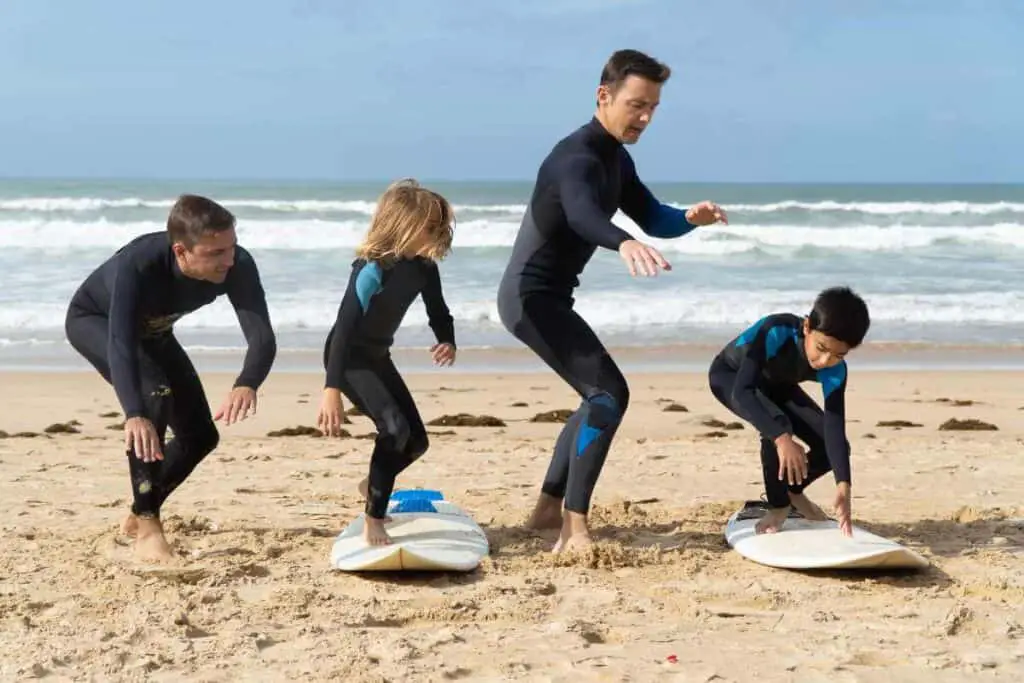
Once your student is geared up, it’s time to start with the basics. Begin by teaching them how to paddle. Proper paddling technique is essential for catching waves and maneuvering in the water. Encourage your student to keep their chest up and their head looking forward while paddling.
Next, teach your student how to pop up. This is the motion of standing up on the board once they catch a wave. Start by having them practice the motion on the beach, and then move to the water.
Make sure they understand the importance of keeping their weight centered on the board to maintain balance.
As your student progresses, introduce them to the concept of reading waves. Teach them how to identify the best waves for surfing and how to position themselves to catch those waves. It’s also important to teach them about ocean safety, including how to identify rip currents and how to stay safe in the water.
Finally, remember to be patient and encouraging with your student.
Surfing can be a difficult sport to learn, but with practice and persistence, anyone can become a successful surfer. Celebrate their successes and help them learn from their mistakes, and they’ll be catching waves in no time!
Practice Makes Perfect
Surfing is a sport that requires a lot of practice to master. It’s important to remember that progress takes time, and it’s essential to stay patient and persistent.
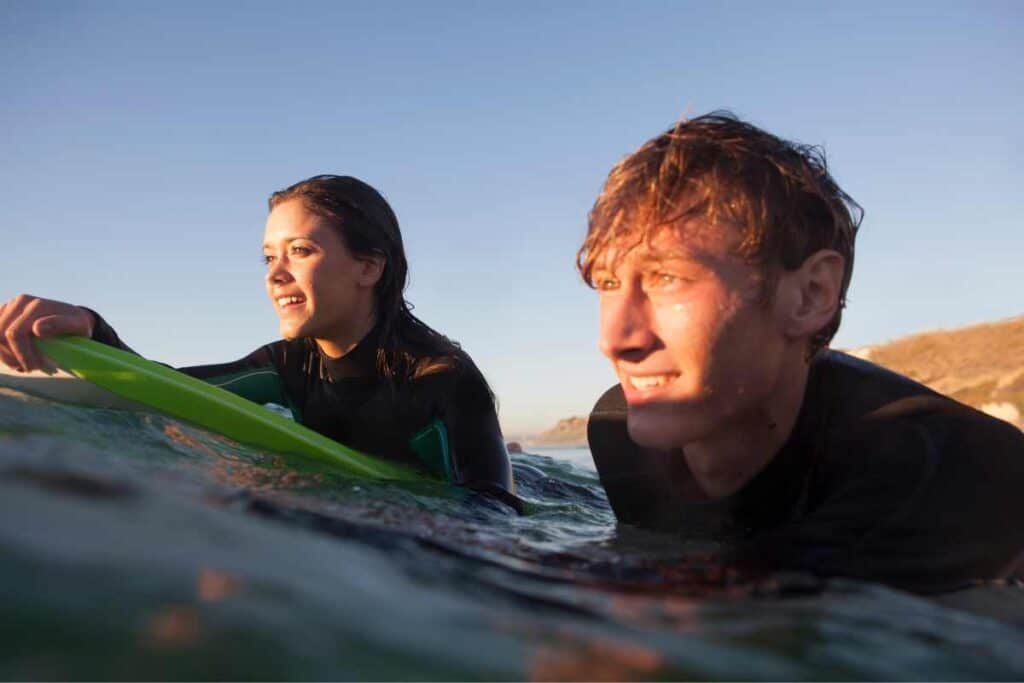
The following tips can help learners make the most of your practice sessions:
- Set realistic goals: Break down goals into smaller, achievable steps. For example, focus on perfecting your pop-up technique before attempting to catch bigger waves.
- Practice regularly: Consistency is key. Try to surf as often as possible, even if it’s just for a short session.
- Experiment with different conditions: Surfing in different conditions can help you improve your skills and adapt to new situations.
- Get feedback: As the student continues their learning and practice they should ask a more experienced surfer to watch you and provide feedback on your technique. Alternatively, record yourself surfing and analyze your performance.
It’s important to remember that surfing is a physically demanding sport.
To maximize your practice sessions, it’s essential to maintain good physical fitness. Incorporating exercises that improve your balance, core strength, and endurance can help you progress faster.
Finally, don’t forget to have fun! Surfing is a sport that should be enjoyed, even when you’re still learning. Celebrate progress and don’t get discouraged by setbacks. With enough practice and dedication, they’ll be riding waves like a pro in no time.
Helpful for beginners – How to Practice Surfing at Home?
Safety Tips

Surfing is an exhilarating sport, but it can also be dangerous if you don’t take the necessary precautions.
Here are some safety tips to keep in mind when teaching someone to surf:
- Surf where there is help to hand (ie within reach of lifeguards.
- Make sure the person you are teaching can swim well before taking them out into the water. They should be able to swim at least 100 meters without stopping.
- Wear a leash at all times.
- Be aware of your surroundings. Look out for other surfers, rocks, and other hazards in the water. Make sure the person you are teaching knows how to avoid collisions.
Remember, surfing can be dangerous if you don’t take the necessary precautions.
By following these safety tips, you can help ensure a safe and enjoyable surfing experience for both you and the person you are teaching.
Common Mistakes to Avoid
Teaching someone how to surf can be challenging, but avoiding common mistakes can make the process smoother and more enjoyable for both the instructor and the student.
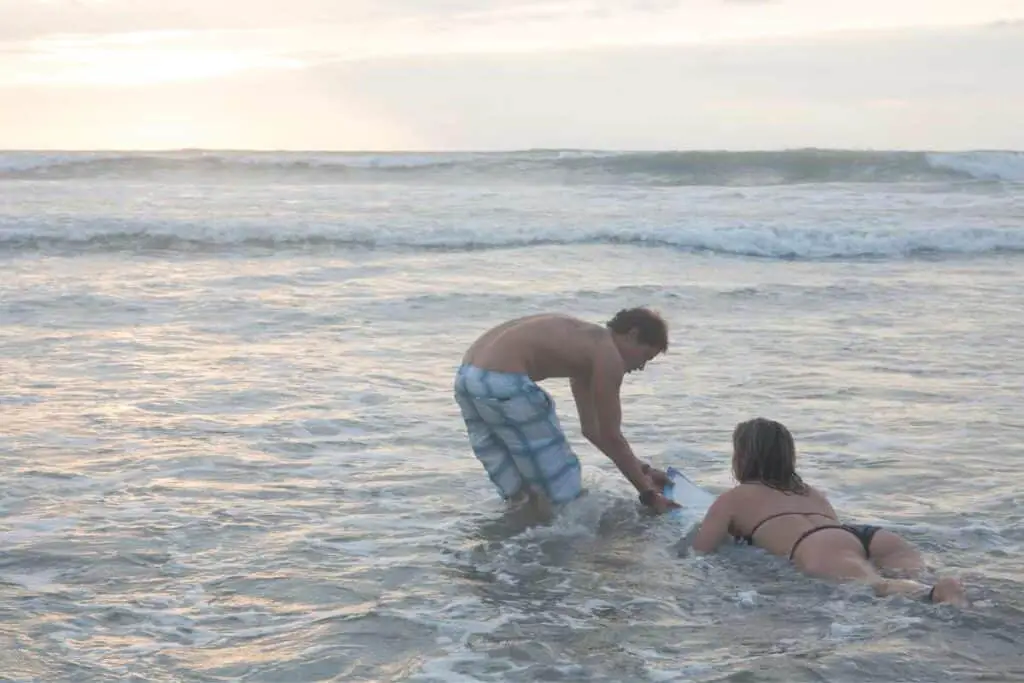
Here are some mistakes to avoid:
- Yelling and Swearing: Yelling and swearing at the student is disrespectful and unprofessional. It can also make the student feel intimidated and discouraged.
- Not Choosing the Right Surfboard: Choosing the right surfboard is crucial for beginners. A board that is too small or too big can make it difficult for the student to catch waves and maintain balance.
- Not Enough Wax: Another mistake beginners make is not applying enough wax on the board. This can cause the student to slip and lose balance while trying to stand up on the board.
- Not Enough Wave Reading: Beginners often make the mistake of not reading the waves properly. This means they miss out on good waves or try to catch waves that are too advanced for their skill level.
- Not Enough Paddling: Beginners often don’t paddle enough. Paddling is essential for catching waves and maintaining balance on the board.
By avoiding these common mistakes, surf instructors can help their students progress faster and enjoy the learning process.
Conclusion
Teaching someone to surf can be a fun and rewarding experience for both the instructor and the student. It’s important to ensure that the student is a strong swimmer and that the conditions are safe for a beginner. The proper size board is also crucial to their success.
It’s recommended that beginners take lessons from a qualified instructor to learn the proper techniques and safety measures. Learning to surf can take time and practice, but with the right instruction and dedication, anyone can become a skilled surfer.
Remember to focus on the fundamentals, such as proper stance, paddling, and balance. Encourage the student to practice regularly and to have patience with themselves. Surfing is a challenging sport, but with perseverance, anyone can master it.
Lastly, safety should always be a top priority. Always check the conditions before heading out and make sure to wear the proper safety equipment, such as a leash and a wetsuit if needed. By following these tips, you can help your student become a confident and skilled surfer while keeping them safe in the water.

